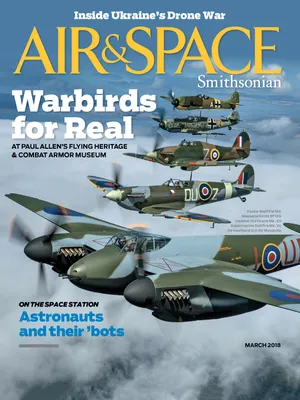Could Future Telescopes Do Without the Mirror?
Tomorrow’s Hubble might be the size of a dinner plate.
/https://tf-cmsv2-smithsonianmag-media.s3.amazonaws.com/filer/a1/5f/a15f282d-7d6c-4348-a8dd-a270934a8581/24d_fm2018_spiderspaceconcept_live.jpg)
Today’s telescopes can see better and farther than ever, but they have become expensive: NASA’s Kepler spacecraft, which discovered planets orbiting far-away stars, and the Large Synoptic Survey Telescope nearing completion in Chile, for example, each cost about half a billion dollars.
Researchers at Lockheed Martin have a radical proposal: Build the observatory without the telescope—sort of. The idea, called Segmented Planar Imaging Detector for Electro-optical Reconnaissance, or SPIDER, begins with large arrays of silicon chips called photonic integrated circuits (PICs). Each chip in SPIDER takes a wide-open image, like a mirror with no focusing point. Then a computer combines the images, gradually eliminating the blurring, in a method called interferometry. By the time thousands of PICs are combined, the image should be as sharp as one produced by a large—and expensive—telescope mirror.
“The biggest advantage of using PICs in place of traditional telescope focusing is the shrinkage in size,” says Qing Gu, a photonics researcher at the University of Texas at Dallas. The telescope’s length, once determining its magnifying power, can now be shortened to the size of a flat detector with PICs sitting side by side. “The 3D problem becomes a 2D problem,” says Gu.
The first SPIDER, with 30 PICs, isn’t yet a substitute for professional telescopes, and it will be some years before one is; Lockheed is calling it “generation-after-next” technology. Gu (who is not involved with SPIDER) notes that PICs currently respond, for example, only to a small range of light wavelengths (a single color), while classical telescopes can process a much wider range.
By eliminating mirrors and the structure needed to support them, SPIDER could reduce a telescope’s mass by up to 90 percent—a major benefit if it’s being launched into space. With SPIDER, future space telescopes could see farther, while costing much less.
